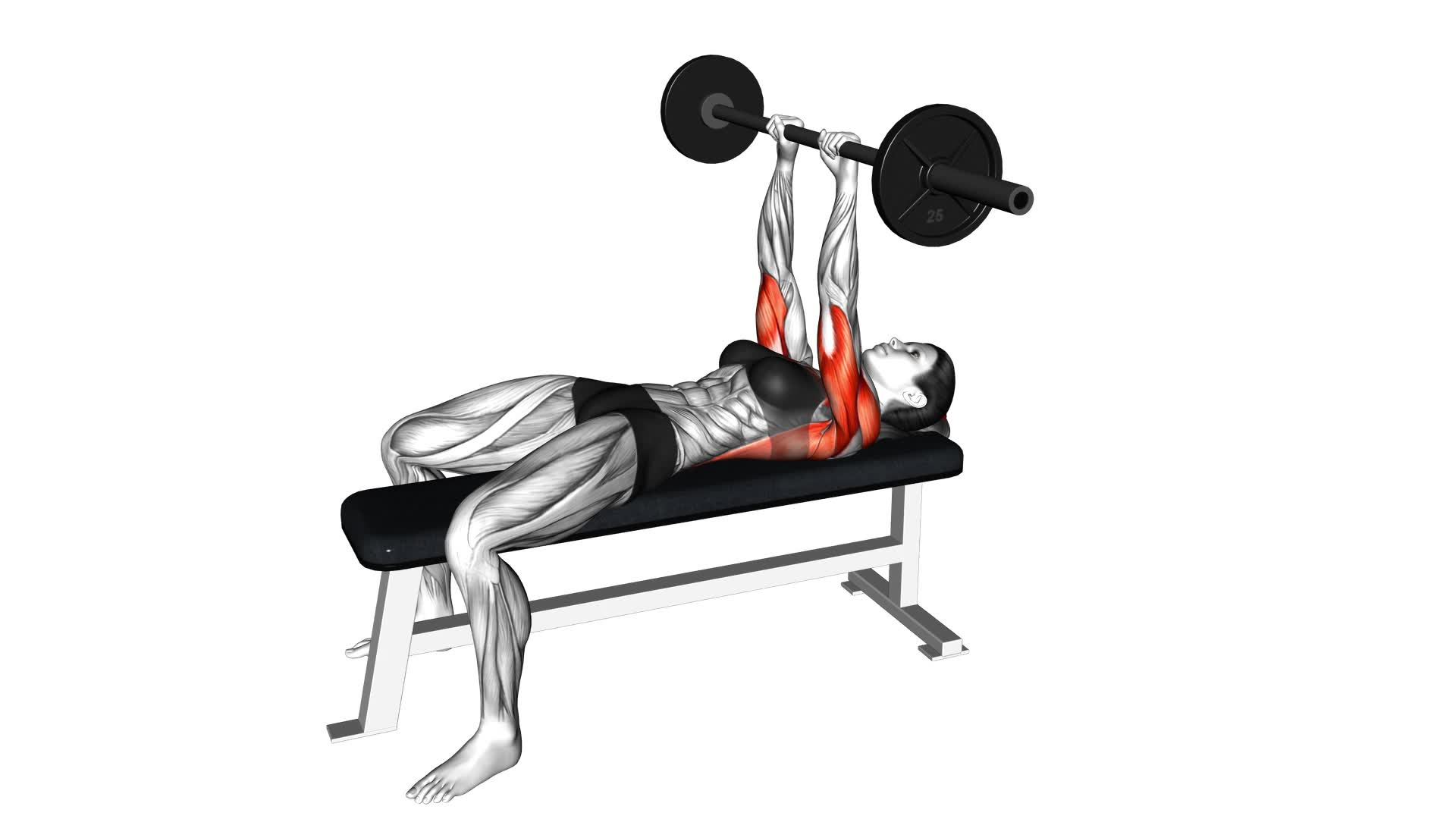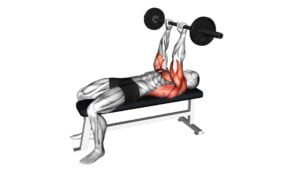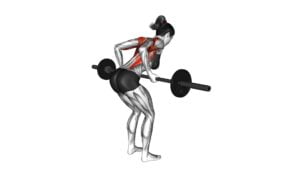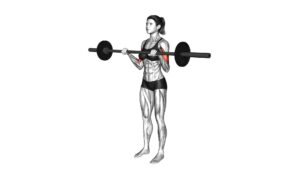Old School Reverse Extensions (female) – Video Exercise Guide & Tips

Looking to level up your workout routine? Check out this video exercise guide and tips for Old School Reverse Extensions.
Watch This Exercise Video
You'll discover the benefits of this exercise, learn proper form and technique, and find out what equipment you'll need.
Avoid common mistakes, modify the exercise for beginners, and get tips for increasing intensity and progression.
Get ready to get fit with Old School Reverse Extensions!
Key Takeaways
- Old school reverse extensions increase strength and flexibility.
- These exercises target the lower back muscles and improve posture.
- Performing reverse extensions enhances overall athletic performance.
- There are variations available to target different muscle groups.
Benefits of Old School Reverse Extensions
You'll experience increased strength and flexibility by incorporating old school reverse extensions into your workout routine. Reverse extensions target your lower back muscles, also known as the erector spinae, which play a crucial role in maintaining a strong and stable core. By strengthening these muscles, you can improve your posture, reduce the risk of lower back pain, and enhance your overall athletic performance.
One of the key benefits of old school reverse extensions is the improvement in your back strength. As you perform this exercise, you engage the muscles in your lower back, making them stronger and more resilient. This increased strength can help you with everyday activities that require lifting or bending, as well as with more intense physical activities like weightlifting or sports.
Additionally, reverse extensions can improve your flexibility. This exercise requires you to extend your lower back, which helps to stretch and lengthen the muscles in that area. Over time, this can lead to improved flexibility and range of motion in your lower back and hips.
There are also variations of reverse extensions that you can incorporate into your routine to target different muscle groups. For example, you can perform reverse extensions on an exercise ball to engage your core and improve stability. Another variation is the seated reverse extension, which targets the lower back muscles while seated, providing a different challenge.
Incorporating old school reverse extensions into your workout routine can offer numerous benefits, including increased strength, improved flexibility, and variations to target different muscle groups. So why not give them a try and reap the rewards for your overall fitness and well-being?
Proper Form and Technique
To perform old school reverse extensions with proper form and technique, ensure that you maintain a neutral spine throughout the exercise. This means keeping your back straight and avoiding any excessive arching or rounding. It's important to engage your core muscles to support your spine and prevent any strain or injury.
When performing reverse extensions, there are several variations and progressions that you can incorporate to challenge yourself and take your workout to the next level. You can add resistance by holding a dumbbell or a weight plate to increase the intensity of the exercise. Another advanced modification is to perform the exercise on an unstable surface, such as a stability ball or a BOSU ball, which will engage more muscles and improve your balance.
Now, let's debunk some common misconceptions and myths about reverse extensions. One misconception is that this exercise is only for women. In reality, reverse extensions are beneficial for both men and women, as they target the lower back, glutes, and hamstrings.
In the next section, we'll discuss the equipment needed for reverse extensions and how to set it up properly for a safe and effective workout.
Equipment Needed for Reverse Extensions
To properly perform old school reverse extensions, you'll need specific equipment. The main piece of equipment you'll need is a reverse extension bench. This bench is specifically designed to target your lower back muscles and allows you to perform the exercise with proper form and technique. It features a padded platform where you can lie face down and secure your legs under the footpads. This stabilizes your body and allows you to perform the exercise safely and effectively.
When it comes to equipment options, there are a few variations available. Some reverse extension benches have adjustable footpads and thigh support, allowing you to customize the equipment to fit your body size and comfort level. Additionally, there are reverse extension machines that incorporate resistance, allowing you to increase the intensity of the exercise as you progress.
If you don't have access to a reverse extension bench, there are alternative exercises you can do to target your lower back muscles. Good mornings, hyperextensions, and Superman exercises are all effective alternatives that can be done with minimal equipment or even just bodyweight. These exercises engage similar muscle groups and can help strengthen your lower back and improve your posture.
Common Mistakes to Avoid
To ensure proper execution and avoid potential injuries, it's important to be aware of common mistakes to avoid when performing old school reverse extensions. One common mistake is using momentum instead of relying on your muscles to perform the exercise. It's important to maintain control throughout the entire movement, focusing on engaging your glutes and hamstrings.
Another mistake to avoid is arching your back excessively, which can put unnecessary strain on your spine. Keep your back straight and maintain a neutral spine position throughout the exercise.
Additionally, avoid lifting your legs too high, as this can lead to overextension and potential injuries. Instead, focus on lifting your legs to a comfortable height while maintaining proper form.
Lastly, don't rush through the exercise. Take your time and perform each repetition with intention and control. By avoiding these common mistakes and focusing on proper technique, you can maximize the effectiveness of old school reverse extensions.
Now, let's discuss how to modify reverse extensions for beginners.
How to Modify Reverse Extensions for Beginners
If you're a beginner, you can modify reverse extensions by using a step or bench. Here are some modification options and beginner-friendly variations to help you get started:
- Step Reverse Extensions:
- Place a step or bench behind you and stand facing away from it.
- Step back onto the bench with one foot, keeping your body upright and core engaged.
- Slowly lower your other leg towards the ground, maintaining control and stability.
- Use your glutes and hamstrings to lift your leg back up to the starting position.
- Repeat on the other side.
- Bench Reverse Extensions:
- Sit on the edge of a bench with your hands gripping the sides for support.
- Extend your legs straight out in front of you and lean back slightly.
- Engage your core and lift your legs up towards your chest, squeezing your glutes at the top.
- Lower your legs back down with control.
- Assisted Reverse Extensions:
- If you need extra support, you can use a resistance band or have a partner hold your feet while you perform the exercise.
- This will help you maintain stability and proper form as you build strength and confidence.
Tips for Increasing Intensity and Progression
To increase the intensity and progression of your reverse extensions, there are a few effective techniques you can try.
One method is to increase the weight or resistance you're using, gradually challenging your muscles to work harder.
Another strategy is to adjust the number of repetitions and sets you perform, increasing them as you become stronger and more comfortable with the exercise.
Effective Intensity Techniques
Increase the intensity of your workout with these effective techniques for progression and improved performance. Here are three ways to amp up the intensity and challenge your body:
- Progressive Overload: Gradually increase the demands on your muscles by adding weight, reps, or sets over time. This ensures that you continue to push your limits and make progress.
- Advanced Variations: Once you have mastered the basic exercises, try incorporating advanced variations to target different muscle groups and activate more muscles. For example, you can add resistance bands, use unstable surfaces, or perform exercises on an incline or decline.
- Supersets and Dropsets: To take your workout to the next level, incorporate supersets and dropsets. Supersets involve performing two exercises back to back without rest, targeting the same muscle group. Dropsets involve progressively reducing the weight while performing a set, maximizing muscle fatigue.
By implementing these effective intensity techniques, you can challenge your body and achieve better results.
Now, let's dive into the next section about gradual progression strategies.
Gradual Progression Strategies
To effectively increase the intensity and progression of your workouts, incorporate gradual progression strategies. These techniques involve making small, incremental changes to your exercises over time, allowing your body to adapt and continue to challenge itself.
One way to progress is by increasing the weight or resistance used in your workouts. Gradually adding more weight will push your muscles to work harder and stimulate further growth.
Another progression technique is to increase the number of repetitions or sets performed. This can be done by adding one or two more reps or sets each week.
Additionally, you can incorporate advanced modifications into your exercises, such as using instability equipment or performing more complex variations of the exercise.
Frequently Asked Questions
Are There Any Age Restrictions or Limitations for Performing Old School Reverse Extensions?
Age restrictions or limitations for performing old school reverse extensions depend on individual factors such as fitness level and overall health. It's important to consult with a healthcare professional before attempting this exercise.
Safety precautions should be followed, such as maintaining proper form, using appropriate equipment, and gradually increasing intensity. Remember to listen to your body and stop if you experience pain or discomfort.
Always prioritize safety and make modifications as needed.
Can Old School Reverse Extensions Help Alleviate Lower Back Pain?
Old school reverse extensions can indeed help alleviate lower back pain. By engaging your core muscles, these exercises can strengthen and stabilize your lower back, reducing the strain and pressure on it.
When performed with proper form and technique, old school reverse extensions can effectively target the muscles in your back, improving their strength and flexibility. This, in turn, can help alleviate lower back pain and prevent future injuries.
Remember to always follow the correct form to avoid any potential harm.
How Frequently Should I Incorporate Old School Reverse Extensions Into My Workout Routine?
To effectively incorporate old school reverse extensions into your workout routine, it's recommended to perform them 2-3 times per week. By incorporating reverse extensions into a full body workout routine, you can target and strengthen your lower back muscles, which can help alleviate lower back pain.
Additionally, incorporating reverse extensions into a core strengthening routine can improve your overall stability and posture. Make sure to perform the exercise with proper form and gradually increase the intensity for optimal benefits.
Are There Any Alternative Exercises That Can Provide Similar Benefits to Old School Reverse Extensions?
If you're looking for alternative exercises that provide similar benefits to old school reverse extensions, there are a few options you can consider.
One option is the hip thrust, which targets your glutes and hamstrings.
Another option is the Bulgarian split squat, which works your quads and glutes.
Both of these exercises can help strengthen and tone your lower body, just like reverse extensions.
It's always good to switch up your routine and try different exercises to keep your workouts challenging and effective.
Can Old School Reverse Extensions Be Performed at Home Without Any Equipment?
To perform old school reverse extensions at home without equipment, it's important to focus on proper form and technique.
Start by lying face down on the floor, extending your arms overhead.
Engage your core and lift your chest and legs off the ground simultaneously, squeezing your glutes.
Hold for a second and then lower back down.
For beginners, modifications include performing the exercise with bent knees or starting with smaller range of motion.
Conclusion
In conclusion, old school reverse extensions offer numerous benefits, including strengthening the lower back, glutes, and hamstrings.
By maintaining proper form and technique, using the necessary equipment, and avoiding common mistakes, you can effectively perform this exercise.
Beginners can modify reverse extensions to suit their fitness level, while more advanced individuals can increase intensity and progression.
Remember to listen to your body and gradually challenge yourself to achieve optimal results.

Author
Years ago, the spark of my life’s passion ignited in my mind the moment I stepped into the local gym for the first time. The inaugural bead of perspiration, the initial endeavor, the very first surge of endorphins, and a sense of pride that washed over me post-workout marked the beginning of my deep-seated interest in strength sports, fitness, and sports nutrition. This very curiosity blossomed rapidly into a profound fascination, propelling me to earn a Master’s degree in Physical Education from the Academy of Physical Education in Krakow, followed by a Sports Manager diploma from the Jagiellonian University. My journey of growth led me to gain more specialized qualifications, such as being a certified personal trainer with a focus on sports dietetics, a lifeguard, and an instructor for wellness and corrective gymnastics. Theoretical knowledge paired seamlessly with practical experience, reinforcing my belief that the transformation of individuals under my guidance was also a reflection of my personal growth. This belief holds true even today. Each day, I strive to push the boundaries and explore new realms. These realms gently elevate me to greater heights. The unique combination of passion for my field and the continuous quest for growth fuels my drive to break new ground.







